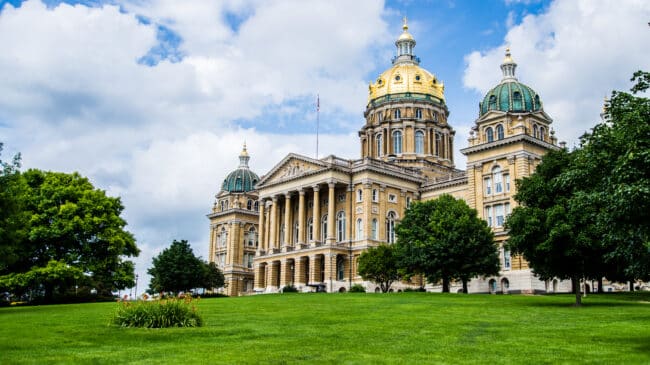As the COVID-19 pandemic and school reopening battles across the country prompt families to search for alternative educational options for their children, school choice policies are increasingly being looked at as a solution.
This is happening nowhere more prominently than Iowa, where a bill to enact an education savings account program has passed the State Senate and is being considered in the House. But the proposal has also sparked substantial debate, the kind that tends to feature a lot of anti-school choice myths. Iowans cannot afford to let these myths block better educational opportunities for their children.
At the heart of Senate File 159 is the creation of new “Student First Scholarship” education savings accounts, into which the state would deposit funds. Eligible families could use the funds for private school tuition, like a traditional voucher, but also for myriad other educational uses, including after-school tutoring, therapy for children with disabilities, and more. Students in public schools flagged for poor performance would qualify for the scholarship and have around $5,200 put into their education savings accounts each year.
A common concern is that such a program would “siphon” money from cash-strapped public schools, hurting the children left behind. As the Des Moines Register editorialized, calling for choice “is an attempt to put lipstick on the pig of siphoning taxpayer money from public schools to funnel to private schools.”
At first blush, that may seem like a reasonable concern: having state dollars following a child to another education provider could, indeed, leave a public school with fewer funds. But that is not siphoning. It is connecting the money to the people it is most supposed to serve — children — and the funds only leave if a family has found an education provider it prefers.
Look at it this way: A family taking money for their child’s education from a public to a private school no more siphons dollars from a public school than choosing to go to Price Chopper siphons from Hy-Vee. Pell Grants similarly do not “siphon” money from community colleges just because they can be used at private universities chosen by students.
Education funding should not belong to any particular institution. It is meant for educating children.
Moreover, since only state funding would follow a child, a lot of money would stay with the public school, increasing resources for each child remaining in the public school. With Iowa spending an estimated $13,774 per public-school student according to the Census Bureau, a $5,200 savings account deposit would leave money behind.
Imagine if Hy-Vee were able to keep most of your grocery budget after you started shopping at your preferred Price Chopper. That would be a fantastic deal for Hy-Vee. The public schools similarly get to keep large sums of money for children they are no longer educating.
Perhaps the per-pupil financial gain for public schools is one reason research has found that in regions where there is more private school choice, public schools perform better. Or perhaps public schools’ improvements have to do with competition — as schools have to up their game when someone else could get their funding. Regardless, 26 of 28 studies on the topic find that school choice leads to better outcomes for children who remain in public schools.
It is the proverbial rising tide that lifts all boats.
And let’s be clear: Anti-choice myths disproportionately prevent the least advantaged from having educational options. The most advantaged families already have school choice. They can afford to live in neighborhoods that are residentially assigned to the best public schools. They can afford to pay out of pocket for the costs of private education.
Funding students directly allows more families to access educational alternatives. School choice is an equalizer.
Ultimately, the need for choice is simple: It is unfair to have a child’s ZIP code determine their future. Iowa should fund students, not institutions.
This column was co-authored by Neal McCluskey, director of the Center for Educational Freedom at the Cato Institute.
A version of this column first appeared in the Des Moines Register.

